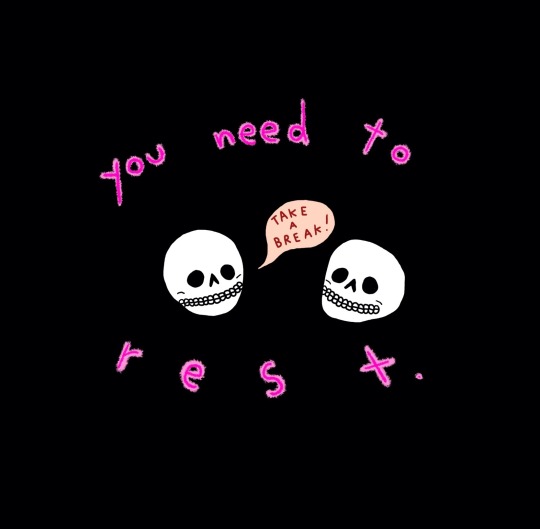#preventing burnout
Text
Understanding and Preventing Burnout: A Comprehensive Guide

2 notes
·
View notes
Text
How To Overcome Burnout Fast

2 notes
·
View notes
Text
Caring for elderly loved ones can be both rewarding and challenging. For those providing senior care in Livonia, Michigan, it’s essential to recognize the signs of stress and take steps to prevent caregiver burnout. Balancing your own needs with the demands of caregiving is crucial for maintaining your well-being and ensuring the best care for your loved ones.
0 notes
Text
Caring for a loved one can be deeply rewarding, but it can also be incredibly demanding. Families rely on home care in Uniontown, Pennsylvania to help manage the daily responsibilities of caregiving. While dedicating time and energy to a loved one’s well-being is commendable, it’s essential for caregivers to take regular breaks to avoid burnout. This is where respite becomes invaluable.
0 notes
Text
8 Practical Strategies to Stay Motivated Through Challenges

Do you ever feel like life is throwing one challenge after another at you? Have you ever experienced setbacks that made you question your motivation and determination? How do you keep your inner fire burning when everything seems to be working against you? These are the questions that we all grapple with at some point in our lives.
Join us as we explore the secrets to staying motivated and achieving our goals, even in the face of adversity.
This article explores strategies for reigniting motivation and persevering when faced with obstacles. We'll delve into the science behind motivation, explore common challenges, offer practical tips to help you stay focused and determined, and understand how leadership coaching can help.
The Science of Motivation
Motivation is a complex phenomenon influenced by various psychological and neurological factors. Understanding these mechanisms can empower you to develop strategies for boosting your drive and achieving your goals.
The Reward System
Our brains are wired to seek rewards. When we engage in activities that lead to positive outcomes, the brain releases dopamine, a neurotransmitter associated with pleasure and motivation. Understanding this connection can help you design goals that trigger your reward system and keep you motivated.
Goal Setting
Setting clear, specific, and achievable goals provides a sense of direction and purpose. Research by Locke and Latham (2002) suggests that SMART goals (Specific, Measurable, Achievable, Relevant, and Time-bound) are particularly effective in enhancing motivation and performance.
Growth Mindset
People with a growth mindset believe their abilities can be developed through effort and learning. This perspective fosters resilience and motivation in the face of challenges, as setbacks are seen as opportunities for growth [Dweck, 2006].
Common Challenges to Motivation
Several factors can hinder motivation, including:
Lack of Clarity
If you're unsure of your goals or lack a sense of purpose, it can be difficult to find the motivation to take action.
Fear of Failure
The fear of making mistakes or not achieving your goals can be paralyzing and prevent you from even trying.
Perfectionism
Striving for flawlessness can be a major motivator, but it can also backfire. The fear of not meeting impossible standards can lead to procrastination and hinder progress.
Burnout
Feeling overwhelmed and constantly stressed can deplete your energy reserves and make it difficult to find the motivation to tackle even basic tasks.
Environmental Distractions
A cluttered workspace, constant notifications, or social media can significantly hinder your focus and motivation.
8 Practical Strategies to Reignite Your Motivation
Here are some practical strategies to overcome these challenges and stay motivated:
Identify Your "Whys"
Take time to reflect on the "why" behind your goals. Connecting to the deeper purpose can make them feel more meaningful and increase your motivation to pursue them.
Break Down Large Goals
Large, overwhelming goals can be daunting. Break them down into smaller, more manageable steps. Completing these mini-goals provides a sense of accomplishment and fuels motivation to keep going.
Focus on Progress, Not Perfection
Don't let the pursuit of perfection paralyze you. Celebrate your progress, no matter how small. Every step forward is a step closer to your goal.
Create a Positive Work Environment
Designate a workspace that is organized and free from distractions. Personalize it with motivational quotes or inspiring images to create a space that fosters focus and productivity.
Practice Self-Care
Getting enough sleep, eating healthy foods, and engaging in activities you enjoy are essential for maintaining your energy levels and overall well-being, which can positively impact your motivation.
Reward Yourself
Celebrating milestones, both big and small, reinforces positive behavior and keeps you motivated to continue pursuing your goals.
Find an Accountability Partner
Sharing your goals with a friend, colleague, or coach can provide a sense of accountability and encourage you to stay on track.
Seek Professional Support
If you're struggling to overcome challenges on your own, consider seeking professional support from a therapist or coach. They can help you identify underlying issues, develop personalized strategies, and provide the tools you need to stay motivated.
The Power of Leadership Coaching
Leadership coaching can be a valuable tool for individuals facing motivational challenges. A coach can provide a safe space for exploration, help you identify your core values and goals, and develop personalized strategies to increase your productivity and achieve your full potential.
Leadership coaching is an invaluable resource that provides individuals with the necessary tools, strategies, and perspective to effectively overcome obstacles, maintain motivation, and attain success across various aspects of their lives.
The Final Note
To sum up, staying motivated through challenges is crucial for achieving our goals and living a fulfilling life. By understanding the science of motivation, recognizing common challenges, and implementing practical strategies, we can reignite our inner fire and persevere in the face of obstacles.
Whether it's identifying our "whys," breaking down large goals, or seeking professional support, there are numerous ways to maintain our drive and determination.
Ultimately, by staying focused and motivated, we can navigate challenges, achieve success, and live up to our full potential.
#Motivation Strategies#Overcoming Adversity#Goal Setting Tips#Psychological Motivation#Dopamine and Motivation#Growth Mindset Benefits#SMART Goals#Fear of Failure#Combating Perfectionism#Preventing Burnout#Reducing Environmental Distractions#Accountability Partners#Leadership Coaching Benefits#Self-Care and Motivation#Reward System in Brain#Positive Work Environment#Breaking Down Goals#Progress Over Perfection#Professional Support for Motivation#Understanding Motivation Science#gatewayofhealing#dr.chandnitugnait
1 note
·
View note
Text
How to Overcome Burnout Without Losing Your Progress
Discover the signs of burnout and effective strategies to overcome it while maintaining your progress. Learn how to recognize symptoms, take breaks, and stay on track, ensuring your well-being and productivity.
Discover the signs of burnout and effective strategies to overcome it while maintaining your progress. Learn how to recognize symptoms, take breaks, and stay on track, ensuring your well-being and productivity.
In the fast-paced, demanding world of today, burnout has become an all too familiar foe for many striving to excel in their personal and professional lives. Whether you’re an…

View On WordPress
#burnout#burnout recovery#burnout symptoms#cognitive symptoms of burnout#coping mechanisms#coping strategies#emotional exhaustion#emotional health#emotional symptoms of burnout#Emotional well-being#fatigue#goal setting#gratitude#healthy habits#mental health#mental resilience#mental wellness#mindfulness#Mindfulness practices#motivation#overcoming burnout#personal development#physical symptoms of burnout#preventing burnout#Productivity#professional burnout#progress#Relaxation techniques#resilience#resilience training
0 notes
Text
youtube
How to Balance your Goals and Life as a Breadwinner
In this video, we will discuss how to balance your goals and life as a breadwinner. This can be challenging, as the pressure to provide for your family while managing other responsibilities can be overwhelming. However, there are several strategies you can implement to prevent burnout and maintain a healthy work-life balance.
#life coach#mindset coach#motivational coach#the breadwinner#bread winner#i am the breadwinner#life coach philippines#sustainable goals#development goals#self care goals#personal vision and goals for the future#wellness coach philippines#life coach training philippines#ways to prevent burnout#how to avoid burnout#how to avoid burnout at work#preventing burnout#Youtube
0 notes
Text
Burnout and bore out are two distinct phenomena that can affect individuals in the workplace, albeit through different causes and experiences. Understanding the differences between burnout and burnout is essential for organizations and individuals to effectively address and mitigate these challenges. By understanding the differences between burnout and burnout, organizations can implement targeted strategies to prevent and address these workplace challenges. Prioritizing employee well-being, providing meaningful work experiences, and promoting a healthy work-life balance is key to creating a productive and fulfilling work environment for individuals.
#distinguishing burnout from boreout#understanding the differences in workplace experiences#work experience#lanteria hr#hr software#organizational culture#workplace engagement#employee engagement#workplace experience#preventing burnout#addressing boreout#employee wellbeing#mental health#preventing burnout and boreout#workplace mental health#distinguishing workplace challenges#impact of burnout and boreout on employee#workplace experiences#burn out
0 notes
Text
How well can technology aid in preventing burnout among medical professionals?

Health care workers are among the most burned out populations since the COVID-19 pandemic. In fact, Medscape's 2022 Physician Burnout and Depression Report predicted a five percent increase in burnout rates, from 42% in 2020 to 47% in 2021. Physician burnout rates last year also increased from 44% to 51.% , of emotional burnout Topping Maryville University’s list of medical specialties with the highest standards. Next is burnout for rheumatologists, at 50% in 2021 .
High load, low failure
Many technological advances in health are not well suited to managing the work of doctors, reports have found. This is because doctors have to perform many tasks, from creating treatment plans to managing electronic records. Our previous discussion of messages generated by the EHR showed that the use of this algorithm led to the destruction of these mailboxes. This forces primary care physicians to spend more than half of their workday interacting with EHRs just to remind doctors to order tests rather than just handling important messages from patients or colleagues. That went against the grain of the school, resulting in more burnout and less work time at the hospital. Therefore, it is important to use technology to keep in mind the big picture of physicians' work.
Specifically designed to reduce fatigue
Therefore, changes in the industry began to focus on school quality and doctors’ care instead of many available technologies. Here are some notable examples of well-integrated technology in the healthcare industry.
Ambient technology in medical records
Ambient computing simplifies clinical data processing by using artificial intelligence to respond to human behavior and needs. This provides digital audio data, reduces the time doctors need to work on administrative tasks, and reduces burnout. Smart hospitals have begun using this in basic solutions, and experts at the University of Michigan believe that if a health clinic wants to continue using ambient computers for CDI, it should be simple and easy to deliver. In 2021, especially in the revenue cycle, adoption is starting to gain momentum.
Computer modeling in vaccine development
The manufacturing process for new vaccines takes about 10 to 15 years and can cost between $200 million and $500 million. But a Medical News article highlights the recent development of COVID-19 vaccines that have unlocked the power of computerized systems It demonstrated the ability to predict what parts of the virus B-cells and T-cells of the immune system will recognize. This allows rapid identification of vaccine targets through genetic sequencing, reducing the number of years needed for specialized research. In this way, doctors can respond quickly to the development of vaccines and reduce the burden on the health system during any future illness or chronic illness.
Patient Care Technology
Physician shortages are a common problem in the industry, reduced by patient placement technology by Rice County Hospital staff in Lyon, Kansas Patient integration technology coordinated patient care at the 25-bed Level 4 hospital and patients who needed to be transferred to another facility. Ambulances and other transportation services are integrated with health systems to eliminate the need for telephones. Portable. Therefore, doctors performing emergency procedures can quickly and effectively provide patients with the care they need. This maximizes limited resources without expanding the workforce. Knowing that technology can effectively manage work utilization allows doctors to focus solely on their patients. The industry must find ways to reduce physician burnout, especially as we recover from the effects of the COVID-19 pandemic By focusing on the wellness of physicians and effective technology, we can continue to ensure the health and productivity of the healthcare workforce in the future.
0 notes
Text



The casualties have officially dropped to 0.
#Makoto Naegi#aoi asahina#danganronpa thh#danganronpa trigger happy havoc#super danganronpa goodbye despair#super danganronpa 2#Sdr2#An art#Can you imagine how stressful it all was for Makoto and how relieved he must've been realizing the program was a success#And that not only did he make the right decision and didnt re-doom the world. But he saved lives#And gets to watch people he encountered in a state of total detachment get back on their feet#I think about it...#I think acc to the anime he didnt actually know if it was a success or not until everyone showed up at the same time#But I wanted to draw this anyway. Makoto aoi bestie friendship !!!!#I just think he'd be so happy for the simple fact that he managed to do a good thing and make ppl happy OK IM DONE#I said I'd take a break from drawing for a bit to prevent burnout. I lied. I am unstoppable and hubris will kill me
3K notes
·
View notes
Text

#burnout prevention#fuck burnout#skeletons#take a break#you need to rest#doodles#bad art#lousy drawings#doodle
3K notes
·
View notes
Text

some doodles i made in the last few days!
#hi fi rush#korsica#and a peppermint chillin there too#myart#sketches#work has been ramping up steadily all year!#but i've been keeping it easy to prevent burnout :)
144 notes
·
View notes
Text
I FINALLY FIGURED OUT HOW TO DO THIS COLORING STYLE

modern au riri cuz i got this sudden burst of energy after the acting thingy I just got included in;)
THIS WAS SO FUN TO DRAW
USED ONE REFERENCE FOR THIS U CNQ EASILY FIND IT AT PINS
please refrain from stealing. thank you!
#❄️ 𝐫𝐢𝐫𝐢𝐭𝐬𝐮𝐤𝐢⎯⎯#❄️✏️⎯⎯#demon slayer#kimetsu no yaiba#demon slayer oc#original character#kimetsu no yaiba oc#kny oc#demon slayer x oc#kimetsu no yaiba x oc#kny#ds#digital art#oc art#digital artists on tumblr#artists on tumblr#OH BTW TOKITO DULYA IM BOUTTA START UR REQUEST NOW#i just needed a lil break to prevent burnout hehsusgahah#demon slayer oc art#demon slayer art#kny oc art#kny art
97 notes
·
View notes
Text
Hi everyone,
As I said earlier, I wanted to post more about ADHD burnout. I found an article that explained it pretty well. This excerpt is going to be long, so I apologize in advance:
ADHD Burnout
What is ADHD Burnout?
It’s possible that you’ve heard of Autistic burnout; however, ADHDers have a unique experience of burnout. Symptoms of ADHD burnout more broadly include:
Lack of motivation
Inability to concentrate
Guilt
Depression
Anxiety
Poor productivity
Irritability
Cynicism
The overlap of symptoms and comorbid conditions can make it difficult to identify when ADHDers are truly struggling with burnout, though.
ADHD burnout is often something a little deeper. It refers to the cycle of overcommitting and overextending that leads to fatigue in people with ADHD. It involves taking on too many tasks and commitments, and then the subsequent exhaustion that happens when we’re unable to fulfill all of our obligations.
Why do people with ADHD struggle with burnout?
1. We’re overcompensating and overcommitting
Growing up, many ADHDers experienced the crushing weight of expectation. Whether it was caregivers or educators, we were often told that we weren’t trying hard enough. It felt like we were always just shy of reaching our full potential.
In actuality, we were being asked to function like neurotypical children, and without adequate support for our ADHD brains and executive dysfunction struggles. This is where many of us internalized the idea that we were lazy, careless, or unintelligent.
These false beliefs can lead to overcompensation, in which we compulsively try to please people and make up for these “shortcomings” we think we have. We’re constantly striving, though the goal posts keep moving on us.
This tendency to people-please can be carried into our adulthood, and is a recipe for overexertion. It also makes it difficult to admit that we’re struggling, because we don’t want to let others down. This relentless effort to appear neurotypical is often referred to as “ADHD masking,” and can be a source of real fatigue for people with ADHD.
2. We feel guilty for resting
When we’re already combating a stereotype of laziness, many of us feel guilty about resting. It can feel easier to be in constant motion (whether we experience hyperactivity or not!) because it feels safer to be doing something than risk the judgment that can come with doing “nothing.”
We might even believe that if we were to allow ourselves to rest, we would never get anything done, because we would struggle to get started again (task initiation is a big struggle for us). The irony is that denying yourself rest is the quickest route to exhaustion, and can exacerbate ADHD symptoms. It can be hard to pump the brakes and practice rest when there are so many negative associations with it.
After a lifetime of being told to “try harder,” it can feel counterintuitive—sometimes impossible—to try less and rest more
3. We struggle to recognize our limits and set boundaries
Part of executive dysfunction means that we have trouble sequencing, initiating, and organizing our tasks — which are all symptoms of ADHD. This also means we struggle to estimate how much time and effort something will take, making it easy to overcommit by accident. We may also struggle with setting boundaries.
As people-pleasers, we were discouraged from having boundaries at a young age. We may struggle to say “no” for fear of disappointing others or being rejected (something we’re already sensitive to anyway; this is known as rejection sensitive dysphoria).
As we accumulate more and more tasks, it can begin to feel unmanageable, leading to the dreaded overwhelm-shutdown. This is a freeze response that can happen when we’re unable to begin or complete a task. This “stuck” feeling can exacerbate our anxiety and make it difficult to move forward.
How to avoid ADHD burnout:
There are some golden rules for preventing burnout that I think are crucial for ADHDers to remember. Here are a few:
1. Affirm your self-worth
Your worth is not dependent upon what you give to people, and your sole purpose in life isn’t to make everyone but yourself happy. As the saying goes, “Don’t set yourself on fire to keep others warm.” You are inherently valuable, regardless of how useful, productive, or helpful you are to others.
2. Practice saying “no” without apologizing
You can’t be everything to everyone, and your capacity is not limitless, no matter what your brain tells you. Give yourself full permission to say “no, I can’t,” “I don’t have time for that,” “I’m not available at that time,” and every other variation on that. You may disappoint someone, sure!
But you aren’t responsible for managing other people’s emotions.
3. Overestimate how much time something will take
This is a general rule that I find quite helpful. Take the amount of time you think something will take—and double it. It may feel absurd at first, but it’s better to overestimate than to underestimate, and this will help you get a stronger sense of your limitations.
4. Commit to rest
Notice I’m saying “commit to rest” and not “practice self-care.”
Some of us (certainly not me…) have turned self-care into another set of expectations we feel the need to fulfill. Let that go.
Instead, practice: laying down, daydreaming, deep breathing, and anything else that helps you reset.
5. Ask for help when you need it
It’s okay to struggle, and it’s okay to ask for support when you do struggle—whether that's therapy, your colleagues, an ADHD coach or a manager at work.
Workplace accommodations and school accommodations can also make a huge difference.
6. Drop the mask
Many neurodiverse individuals try to mask their ADHD and/or autism by not letting others see them sweat—but this doesn’t allow us the opportunity to be helped and supported when we need it most.
You deserve every resource you need to thrive—don’t convince yourself that you have to do this thing alone.
As always, the full article will be below if anyone wants to read it.
#adhd#adhd post#adhd burnout#what is adhd burnout#struggling with adhd burnout#ways to prevent adhd burnout#feel free to reblog#tw bright colors#tw eye strain
382 notes
·
View notes
Text
Uhhhm uhh... Minecraft?

Minecraft warden :}
Ive got a warden oc (this is not a depiction of him, more of a standard species study) and had issues pinning down his preportions after not drawing him in a while (.....LIKE. 2021.) so i dissected the warden and rebuilt it from the scraps
Ive come to the conclusion that i love them so much after being hunted by one in its natural domain for the first time
#mutedeclipse#digital art#minecraft#hello???#yeah minecraft. i swear ill be back on bomberman stuff soon im taking a break to prevent burnout!!#minecraft warden#warden#minecraft deep dark#minecraft design#minecraft mobs
171 notes
·
View notes
Text
tough pill i have to swallow is realizing that “getting better” doesn’t mean “getting to do more things,” getting better for me means taking better initiative in protecting myself. and THAT means making sure i do LESS things
#sounds kinda obvious but i only just realized it lmao#feels like i have to grieve a lot of my goals now but no one said the healing process would be easy#danbles#and for anyone else that has a disability that prevents them from doing smth#or trauma that makes certain triggers limit their opportunities#or neurotypes that make it harder for them to love smth like they used to#or whatever else#i don’t want to make it sound like you have to give up on the things that make you happy#I’M certainly not going to#but a huge value of mine has always been experiencing everything life had to offer#and everytime that backfires (whether it’s burnout; triggering a flashback; triggering an episode; putting strain on my body; etc)#i always just thought to myself ‘it was bad timing’ or ‘i haven’t gotten better yet’ bc the endgoal was to always get to that point where#i could experience it. i want to try new things all the time. i want to feel normal and be included in everything#but if smth keeps Making Me Feel Bad then maybe there isn’t a version of myself that can take it on#it’s not resilience to put yourself in harm’s way#idk how well i’ll be able to put this into practice tbh. i rly rly like exploring different experiences#even negative ones are valuable to me#but the least i can do for myself is recognize that i might not always be the problem#maybe i’ve already hit the limit on all the self-work i can do. maybe it’s the environment or situation itself that’s the problem#fuuck guys i feel like i’m going thru a stage of grief here why is this shit so hard 💀
68 notes
·
View notes